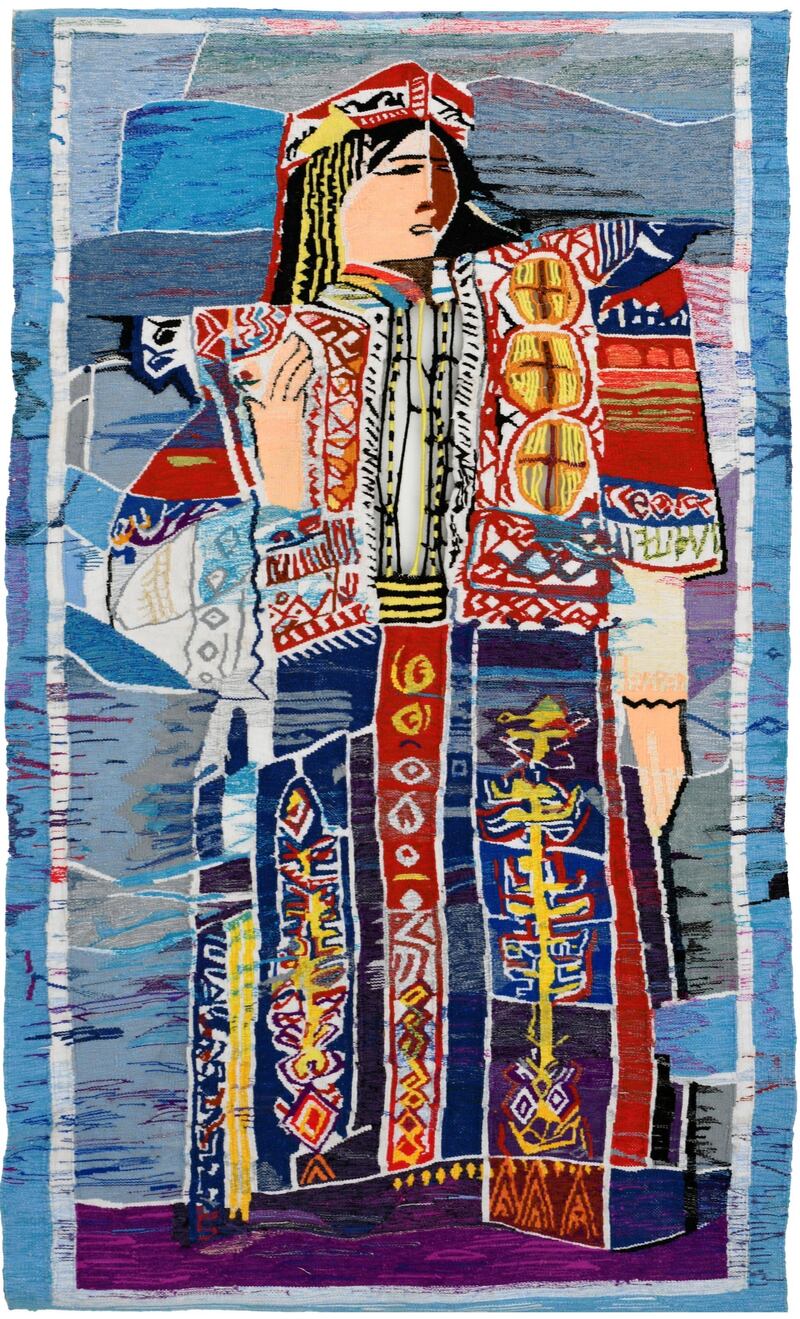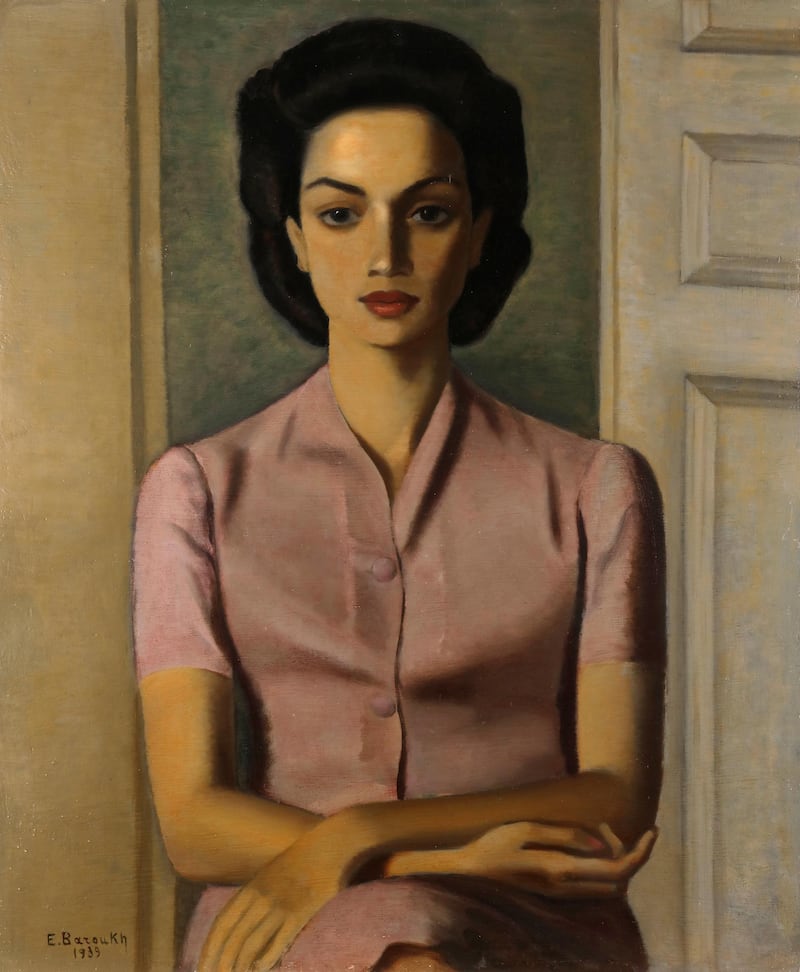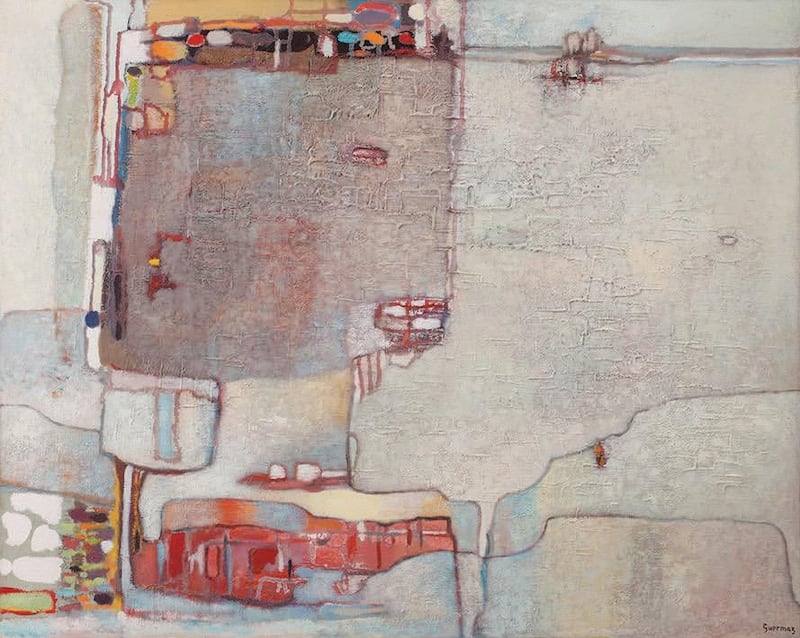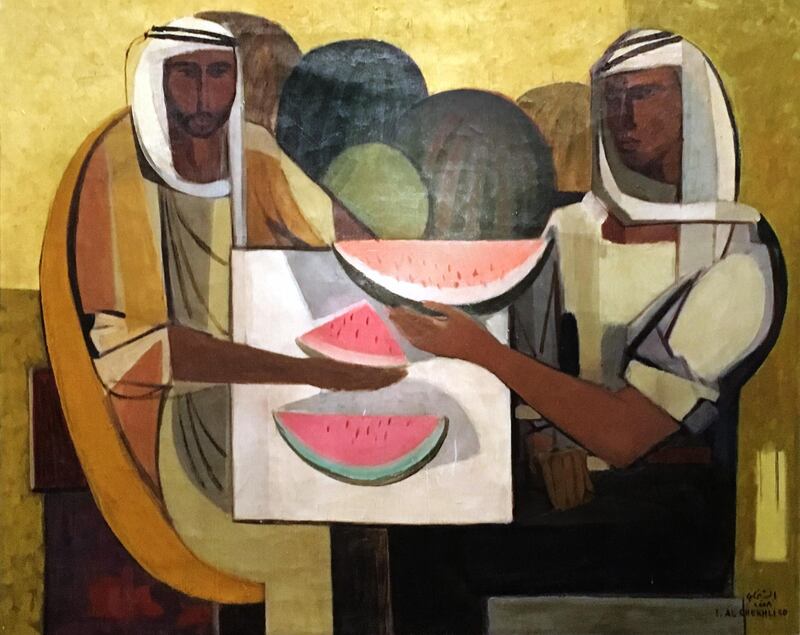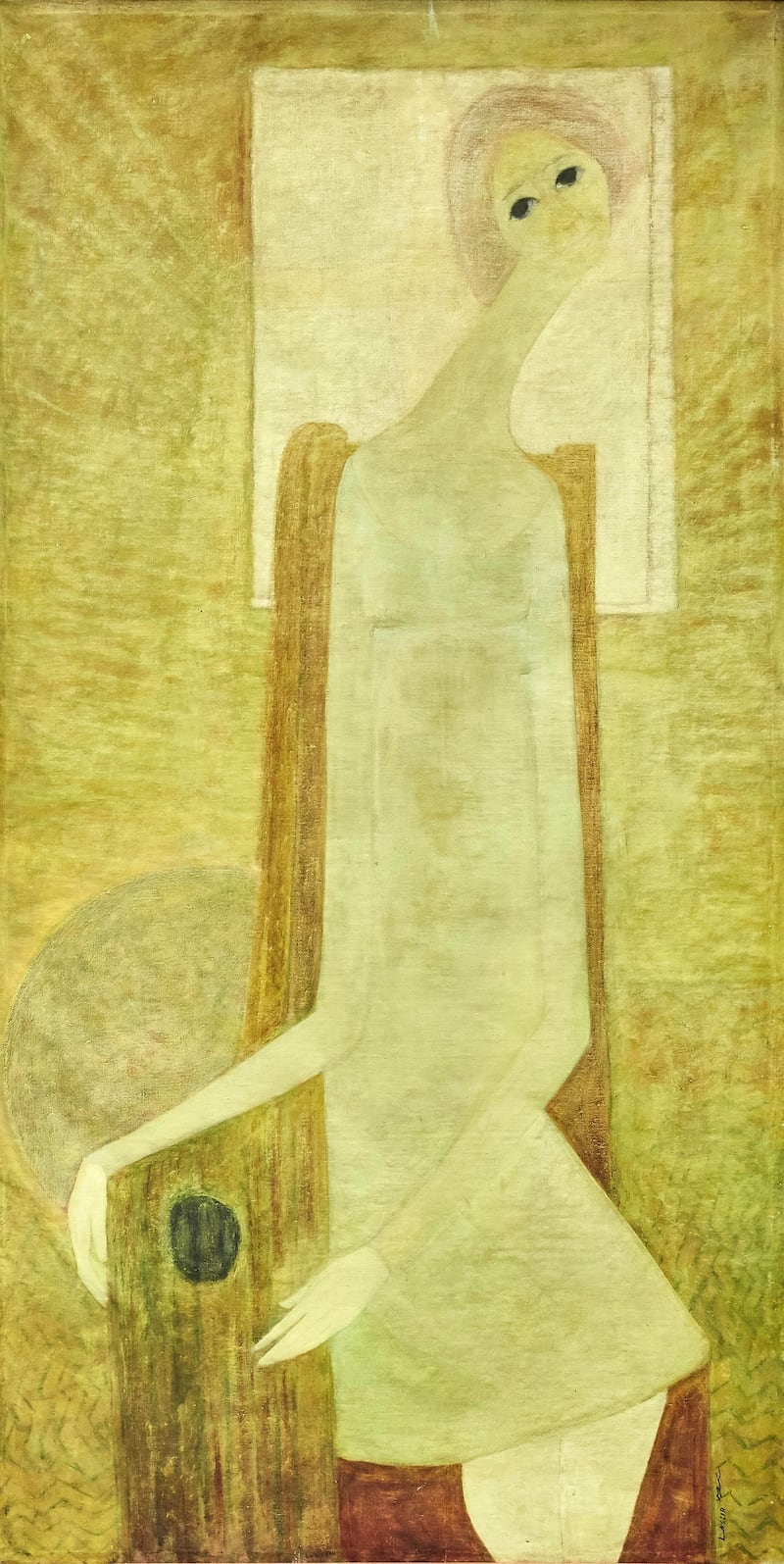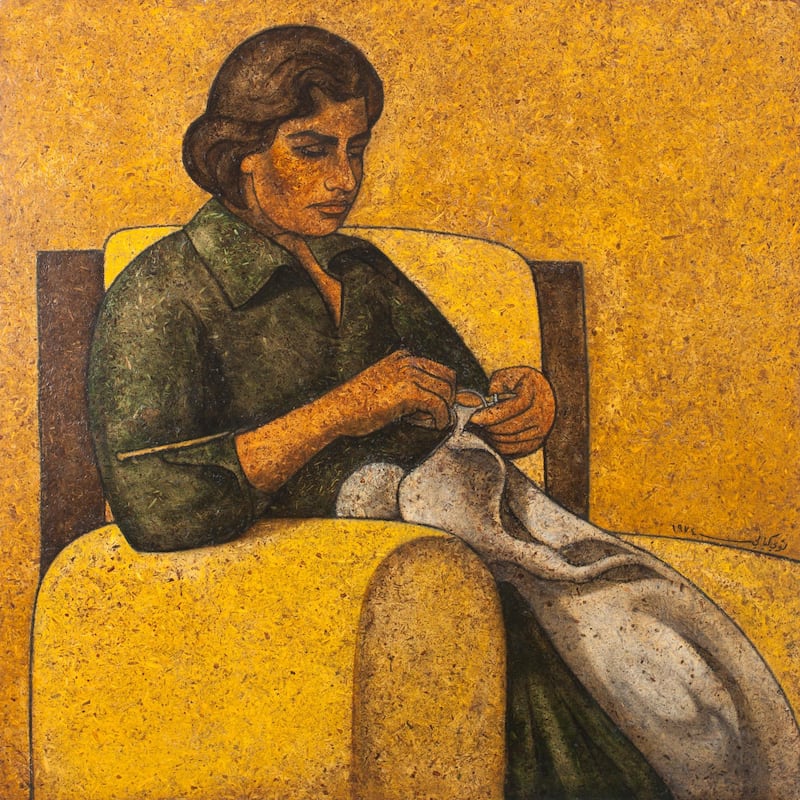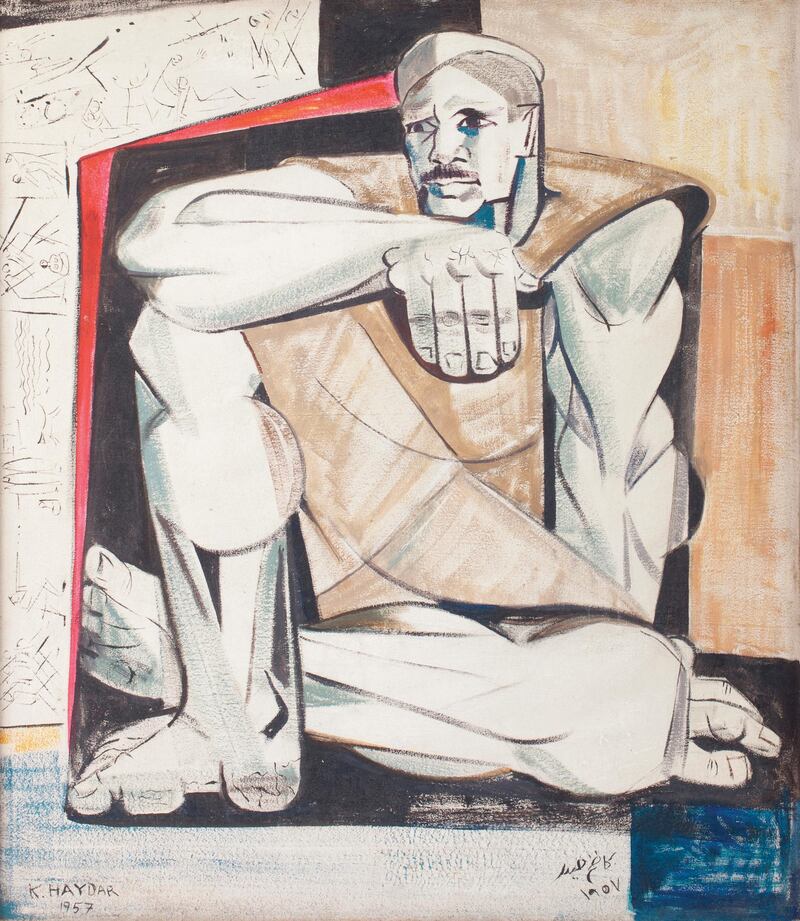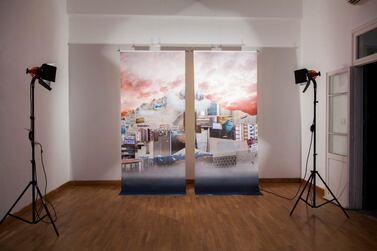The Barjeel Art Foundation – in collaboration with the Sharjah Museums Authority – has launched a virtual tour of A Century in Flux: Chapter Two to commemorate International Museums Day on Monday, May 18.
Though the exhibition first opened its doors in November 2019, this is the first time it has had a virtual offering. Those who have visited the exhibition before will appreciate seeing some of the most seminal works of modern Arab art again, while those who are venturing into the space for the first time are in for a treat.
While the virtual tour isn't quite the same as experiencing the exhibition in person to mark International Museum Day, digitally exploring A Century in Flux: Chapter Two seems like an apt way to adapt to the times.
The first artwork you're likely to see when you load the virtual tour is Safia Farhat's La Mariee.
Hung on a detached red wall beyond the two arches of the Barjeel wing’s entrance at the Sharjah Art Museum, the tapestry by the Tunisian artist looks no bigger than a thumbnail in the virtual distance. But its vibrant yellows, subdued blues and deep pomegranate reds catch your eye, tempting you to disregard the artworks that precede it and go straight to the tapestry, eager to have a closer look at what is a seminal work by a pioneering artist.
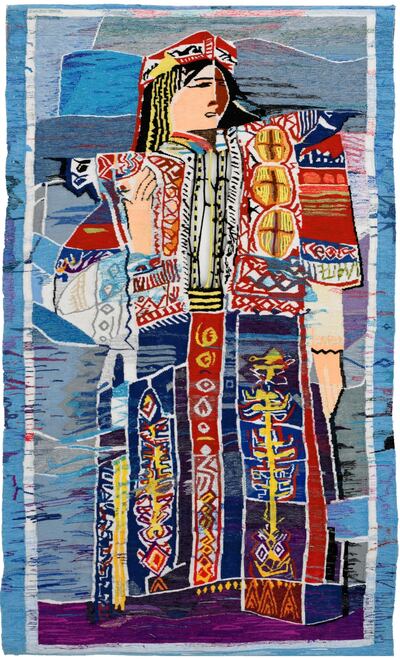
But the tour won’t let you leap forward. A click can only get you so far, and that’s a good thing.
As you move forward to the first exhibition space, a number of other works begin to appear at the flanks.
The online exhibition showcases more than 120 artworks, demonstrating the broad range of styles, techniques and themes that have marked artistic practices in the region between the 1880s and 1980s. And it feels important to give each one their due. There is a circular tag beside each of the artworks and if you move your cursor over the tag, you will find out more about the piece and the artist behind it.
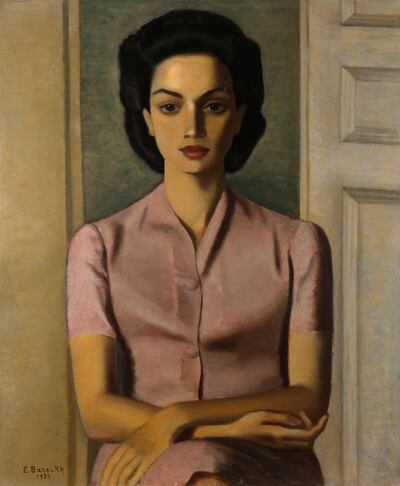
The first exhibition space has some stunning works by a number of pioneering Arab artists. Portrait de Mademoiselle AC by the Egyptian painter Ezekiel Baroukh is particularly noteworthy. Painted in 1939, the portrait shows a woman in a formal coral dress, sitting upright with her hands on her knees. There is the hint of a smile on her lips as she looks back at the viewer with a warm and unwavering gaze. Another eye-catcher is the painting Watermelon Sellers by the Iraqi artist Ismail al-Sheikhly. Showing oval-faced watermelon sellers, the painting is a graceful meeting of disparate geometric shapes with spirited earth tones.
A few clicks later and you're standing in front of the aforementioned La Mariee. The artwork by Farhat portrays a woman in traditional Tunisian clothing with a Cubist sensibility. But it is the choice of medium that sets the 1963 work apart from its contemporaries. Even in a virtual setting, you can feel the texture of the tapestry, spot the way the weave changes along different parts of her clothes, and appreciate the way the carpet's top fringe drapes over the work.
While many of the featured artists in the exhibition are members of pioneering art movements and collectives, others are lesser known practitioners. These include Leila Nseir, Nadia Saikali, and even Naziha Salim.
Although the Iraqi artist may finally be getting more recognition now, she has, for a long time, been in the shadow of her brother, Jewad Salim.
Sultan Al Qassemi, founder of the Barjeel Art Foundation, says these artists may not have significantly "influenced art history in the 1950s and 1960s – a lot of them were unknown – but to say that they never did work is also unfair."
The art collector invites audiences to explore the show, which draws together artists from across the Arab World, and contains a multitude of histories, layered political accounts, and moving reflections on the human condition.
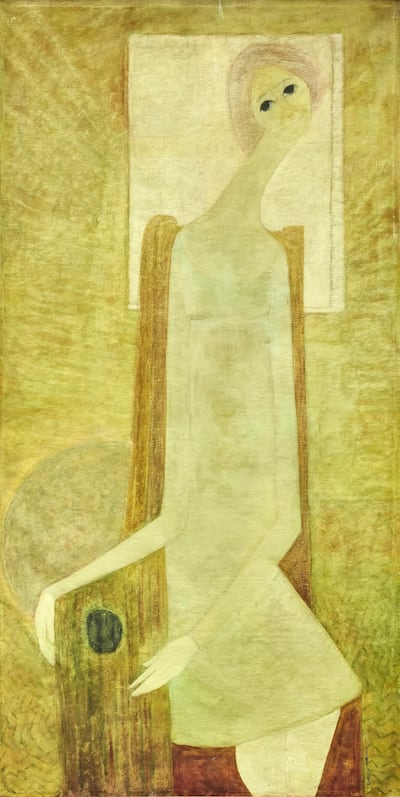
“I am very pleased that it can now be experienced online by the wider public across the globe,” he adds.
The second iteration of the exhibition aims to address notions of institutional representation and, in particular, to confront the question of gender inequality in the art world.
Manal Ataya, director general of the Sharjah Museums Authority, said the virtual tour will “initiate much needed debates beyond the limits of place and time on topics such as that of gender representation in museums.”
The virtual tour, Ataya points out, is part of the authority’s continuous efforts to reach out and engage members of the public during the coronavirus lockdown.
The pandemic may have made us more reliant on technology in the way we experience art, but Ataya says we can still continue "to appreciate and understand the impact that artists had in developing society's notion of identity and collective history."
